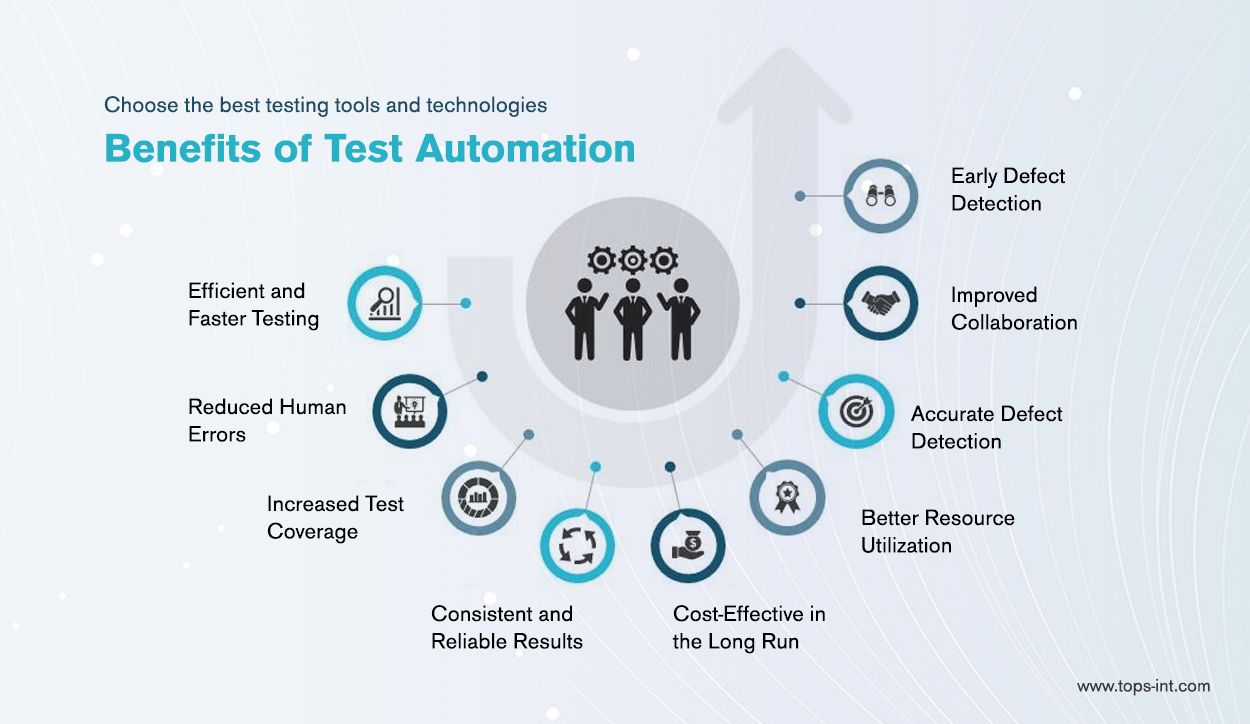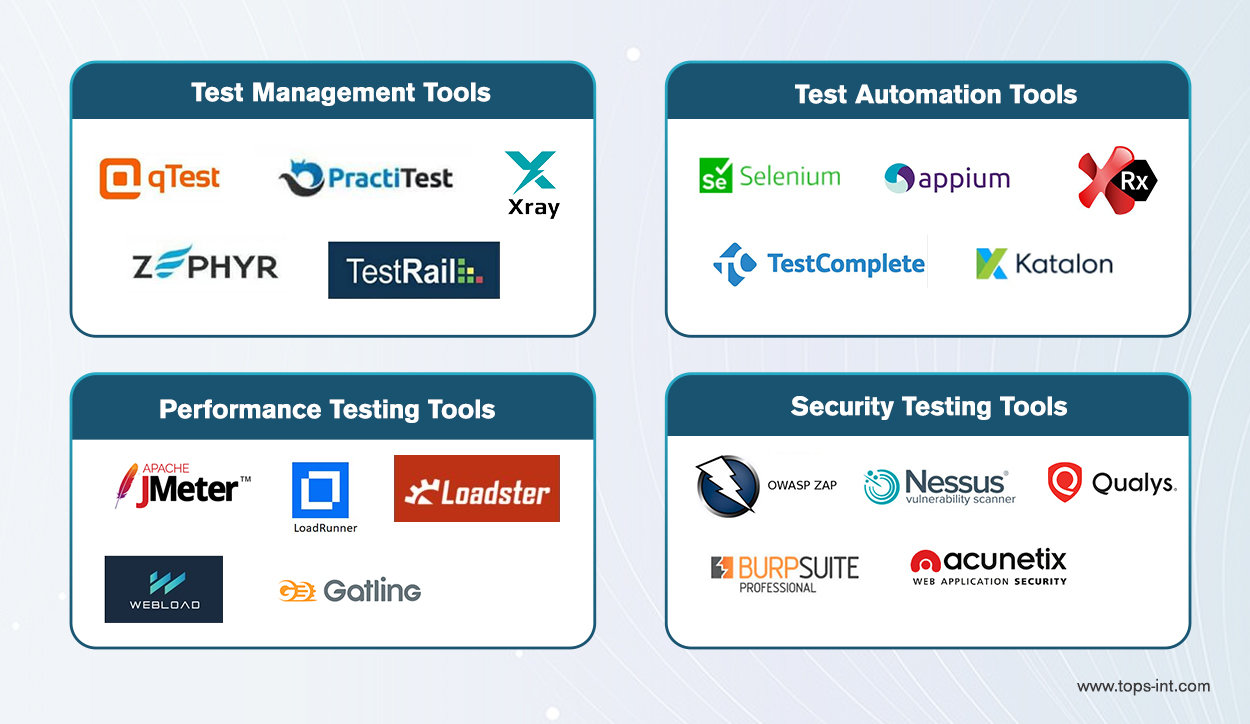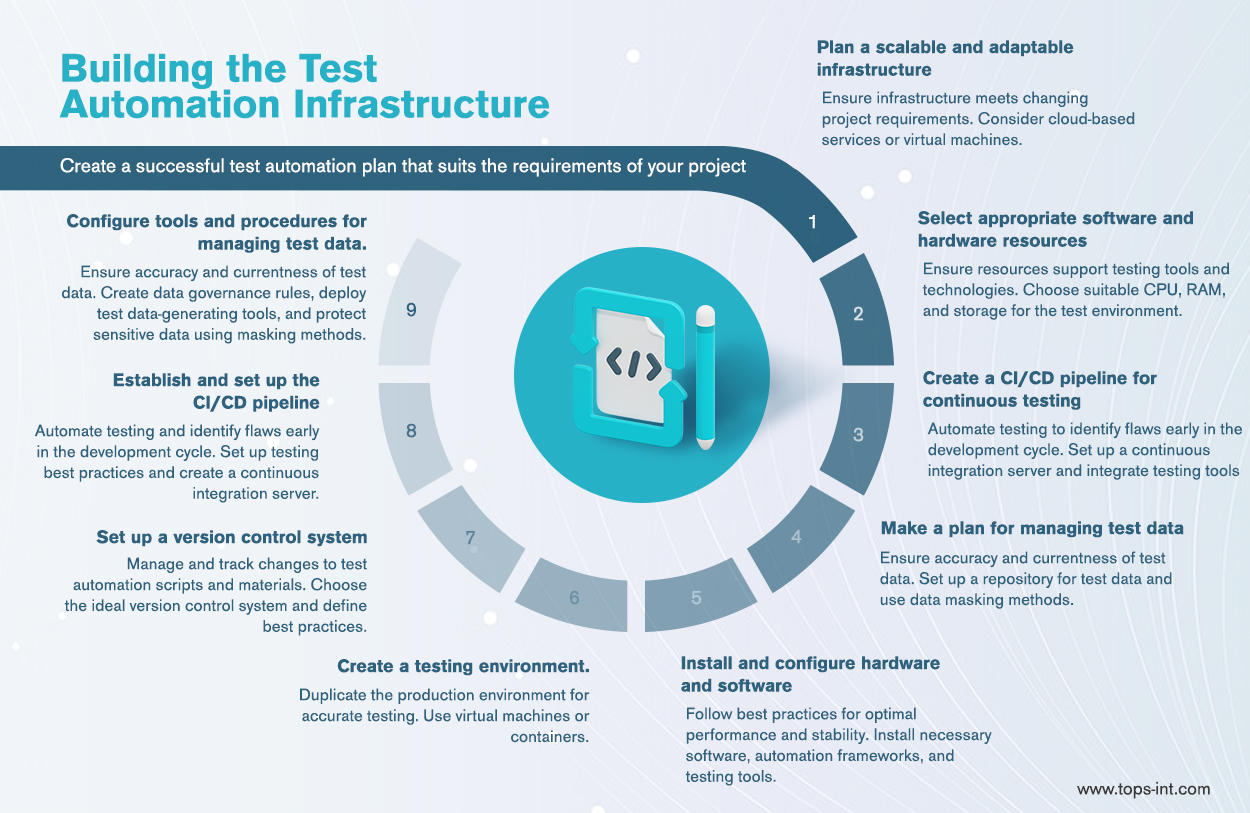Do you hate spending a lot of time manually testing your software programmes? Do you wish to boost the effectiveness and productivity of your team? The solution to this is to create a seamless test automation strategy.
What is a test automation strategy? A test automation strategy describes how you'll automate your testing procedure to enhance software quality, shorten the time it takes to market, and boost customer happiness.
This blog will review everything you need to know to develop a successful test automation plan.
We can help you with anything from evaluating your present test automation procedure to choosing the best testing tools and technologies to put your test automation plan into practice and keeping it up to date.

Tips For Making The Best Test Automation Strategy
Assessing the Current Testing Process
Building a good test automation plan requires assessing the present testing process. It assists you in spotting areas that might use automation and your present testing issues. When evaluating your present testing procedure, take into account the following factors:
Understanding the Current Testing Process
- List the many forms of testing that are presently being done. Functional testing, regression testing, performance testing, security testing, and other types of testing may be included.
- Establish the testing's scope and frequency. You will better understand the frequency and subject areas covered by examinations as a result.
- Assess the success of manual testing. Are there any situations where manual testing takes too long or doesn't cover enough ground? Analyse the testing equipment and technologies currently in use. Do they facilitate the testing process or hamper it? Exist any holes or places where the work might be done better?
Identifying the Testing Challenges
Determine the testing difficulties. This can be due to a lack of resources, laborious test cases, insufficient coverage, difficulties replicating bugs, or other problems. Sort the testing difficulties according to importance and viability. This will enable you to choose your areas of emphasis and those that need attention.
Evaluating the Current Testing Tools and Technologies

- Analyse the testing methods and technologies currently in use. Do they satisfy the requirements of your testing procedure? Are they simple to set up and use? Are there any omissions or room for development?
- Analyse the overlaps and gaps in your present toolkit. Do you have duplicate equipment or equipment not being used to its fullest?
- Find any chances to reorganise or combine your testing technologies and equipment. This can include switching to a single testing platform or using fewer tools.
You may improve your knowledge of your testing requirements and find areas that might use automation by examining your present testing process, identifying the testing issues, and evaluating your current testing tools and technologies. This will assist you in creating a test automation plan that is more effective and efficient.
Identifying the Right Test Cases for Automation
Building an effective test automation plan starts with selecting the appropriate test cases for automation. Avoid spending time on tests that are not worth automating, and concentrate on the most crucial areas. The following advice will help you choose the proper test cases for the automation:
Identifying the Right Test Cases for the Automation
- Pay attention to test cases that need a lot of human labour and are repeated. Because they may save time and lower the possibility of human mistakes, they are excellent candidates for automation.
- Find test cases that cover essential features or significantly influence the system. These are crucial areas to test since they may aid in finding errors early in the development process.
- Sort test cases according to importance and risk to the company. This will enable you to concentrate on the areas most crucial to the organisation's operation and lower the likelihood of flaws.
Automate test cases that change often or have a limited lifetime as little as possible. These tests may not provide enough value to warrant the effort and might be challenging to maintain.
Prioritising the Test Cases for the Automation
- Put the test cases in order depending on the risks and demands of the company. This will enable you to concentrate on the areas most crucial to the organisation's operation and lower the likelihood of flaws.
- Think about the time it takes to automate each test case. When prioritising the test cases, it's crucial to remember that certain test cases can take more work to automate than others.
- Start with a modest number of test cases, then add more as you go. Instead of attempting to automate everything at once, starting small and expanding gradually is preferable.
- You may concentrate on the most important areas and increase the value of your test automation efforts by selecting the appropriate test cases for automation and prioritising them based on business objectives and risks. If you want to learn software testing in-depth then this is a very vital step.
Selecting the Appropriate Test Automation Framework
Building a successful test automation strategy depends on choosing the right framework. A test automation framework is a collection of rules and recommendations for creating and carrying out automated tests. The following factors should be taken into account while choosing the best test automation framework:
Various test automation framework types include:
- Linear scripting framework: This framework, based on linear scripts, is appropriate for small projects with straightforward test cases.
- Data-driven framework: By separating the test data and test scripts, this framework is simpler to maintain and update. Applications that call for a lot of data entry are appropriate for it.
- Keyword-Driven Framework: This framework makes building and maintaining test scripts sample by using keywords to describe test operations and data.
- Hybrid Framework: The hybrid framework combines two or more frameworks to provide a unique framework tailored to the project's requirements.
Choosing a Suitable Test Automation Framework
- Pick a framework that works with your development environment and programming language. It will be simpler to combine with your current tools and technologies.
- Analyse the framework's usability and scalability. The framework needs to be simple to use, easy to maintain, and scalable to accommodate the demands of your project.
- Take into account the framework's amount of community and support. Strong user and developer communities that can exchange best practices and provide assistance for the framework are essential.
- Look for a framework that offers options for reporting and analysis. The framework should provide comprehensive reports and analyses to assist you in finding errors and monitoring your progress.
- You may create a test automation strategy that works well for your project's requirements and aids in your testing objectives by choosing the right test automation framework.
Choosing the Right Testing Tools and Technologies
Your test automation approach must be successful if you want to use the right testing tools and technology. When selecting testing tools and technologies, keep the following in mind:
- Examine the suitability of the tools and technologies for your testing framework and programming language. By doing this, you may be confident that the tools and technologies are simple to combine with your current ones.
- Consider how simple it is to integrate with different technologies and development tools. The continuous integration and delivery (CI/CD) tools and other development tools and technologies should be easily integrated with the testing tools and technologies.
- Look for software with capabilities like test case management, reporting, and analysis. You can more easily monitor progress and find flaws with the aid of these tools.
- Analyse the extent of the tools and technologies support and community. Strong user and developer communities that can provide help and share best practices should exist for the tools and technologies.
Knowing Benefits and Drawbacks of Different Testing Techniques and Technologies

Test management tools: This assists you in keeping track of your test cases, requirements, and problems. They provide a centralised location for all data about testing. The benefits of employing test management solutions include the provision of a central repository, ensuring uniform testing, and facilitating cooperation. Cons include the possibility of cost and extensive setup.
Test automation tools: They may assist you in time savings and lower the possibility of human mistakes. The benefits of employing test automation technologies include time savings, improved accuracy, and a decreased chance of human mistakes. The drawbacks are that setting and keeping them up may be costly and time-consuming.
Performance testing tools: These tools allow you to evaluate how well your application performs under various load scenarios. The benefits of employing performance testing tools include their ability to help you detect performance problems early in the development cycle and improve the performance of your application. The drawbacks are that they may be costly and that proficient use requires specialised knowledge.
Security testing tools: These tools assist you in evaluating the security of your application. They may assist you with identifying security flaws and making sure your application is safe. The benefits of adopting security testing tools include their ability to aid in the early detection of security flaws and the assurance of your application's security. The drawbacks are that they may be costly and that proficient use requires specialised knowledge.
You may create a successful test automation plan that suits the requirements of your project and aids you in achieving your testing objectives by comprehending the benefits and drawbacks of different testing tools and technologies and choosing the right testing tools and technologies.
Building the Test Automation Infrastructure

It takes meticulous preparation and technological know-how to construct a test automation infrastructure since it is complicated. When creating a test automation infrastructure, take into account the following technical factors:
Designing the Test Automation Infrastructure
Scalable and adaptable infrastructure should be planned: The infrastructure should be scalable and flexible enough to meet your project's changing requirements. This may include building a scalable and adaptable infrastructure employing cloud-based services or virtual machines.
- Select the appropriate software and hardware resources: The hardware and software resources should support the testing tools and technologies you want to utilise. Choosing the appropriate CPU, RAM, and storage for your test environment may fall under this category.
- Create a pipeline for continuous integration and delivery (CI/CD): A CI/CD pipeline automates testing and aids in identifying flaws early in the development cycle. Automating the testing process calls for setting up a continuous integration server, integrating the testing tools, and configuring the pipeline.
- Make a plan for managing test data: The test data management approach should guarantee the accuracy and currentness of the test data. This can include setting up a repository for test data and safeguarding sensitive information using data masking methods.
Building the Test Automation Infrastructure
- Install and configure hardware and software: This will contain any required software, automation frameworks, and testing tools. The programme should be installed and configured by best practices to achieve optimum performance and stability.
- Make a testing environment: To achieve accurate testing, the test environment should duplicate the production environment. This can include making a copy of the production environment using virtual machines or containers.
- Set up version control system: With a version control system, you can manage and keep track of changes to your test automation scripts and other materials. This includes choosing the ideal version control system, setting it up for your project, and defining best practices for version control.
- Establish and set up the CI/CD pipeline: The CI/CD pipeline ought to automate testing and assist you in identifying flaws early in the development cycle. This includes setting up testing best practices, integrating the testing tools, and creating the continuous integration server.
- Configure the tools and procedures for managing test data: The test data management tools and procedures should guarantee the accuracy and currentness of the test data. This might include creating data governance rules, deploying automated test data-generating tools, and protecting sensitive data using data masking methods.
You may adopt an effective and efficient test automation strategy that fits the demands of your project and aids in your testing objectives by developing and constructing a test automation infrastructure that is scalable, adaptable, and capable of supporting your testing tools and technologies.
Implementing the Test Automation Strategy
The last stage in creating a successful and efficient test automation process is implementing the test automation strategy. Here are a few things to take into account while putting your test automation strategy into practice:
Putting the Test Automation Strategy into Practice:
- Make a plan for putting the test automation strategy into action. This must have a schedule, checkpoints, and objectives for every stage of the implementation procedure.
- Introduce the new test automation tools and procedures to your team. This may include offering training sessions, seminars, and tutorials to ensure the staff is familiar with the new tools and procedures.
- Keep track of the implementation process's development. Setting up key performance indicators (KPIs) to monitor success and pinpoint areas for improvement may be necessary.
- Improve the test automation procedure continuously. The test automation process should be continually improved based on feedback, statistics, and best practices.
Automation of Testing in the Software Development life cycle:
- Include the test automation process in the lifecycle of software development. From planning through deployment, the testing process must be integrated into every phase of the software development lifecycle.
- Work along with the operations and development teams. Teams from operations and development should work together on test automation. This will make it easier to ensure that testing is included in the development cycle and bugs are found early on.
- Automate the process of deployment. To guarantee reliable and consistent testing, the deployment procedure should be automated. This can include automating the deployment procedure using continuous integration and delivery (CI/CD) solutions.
You may create an effective and efficient test automation process that aids in achieving your testing objectives and raises the calibre of your software by putting the test automation strategy into practice and incorporating test automation into the software development lifecycle.
Conclusion :
The software development process now includes automation testing as a crucial step. Organisations may use it to save time, boost productivity, and save expenses. However, implementing an effective automation approach requires certain abilities and information, which may be learned via a certification programme.
By enrolling in an
automation testing certification course, you may learn about the many tools and technologies used in automation testing, including Selenium, Appium, and TestComplete. Programming languages like Java, Python, and C# may be used to generate efficient test cases, develop test frameworks, and write scripts.
One of the top providers of software testing courses in Ahmedabad is TOPS Technologies. They provide thorough training courses that cover all facets of automated testing, from fundamentals to cutting-edge ideas. Their programmes are often updated to reflect the newest trends and technology and are created by professionals in the field.
Additionally, TOPS Technologies offers practical exercises and hands-on selenium automation testing training to assist you in gaining practical expertise in automated testing. You will engage in practical projects and case studies to learn how to use an effective automation approach in various situations.
In conclusion, the best method to learn how to develop a successful automation strategy is to enroll in a
TOPS Technologies’s selenium automation testing course. Giving you the abilities and information necessary to succeed in automated testing will assist you in developing your talents and moving up the professional ladder.
FAQs
What Advantages Come with Using a Framework for Test Automation?
A test automation framework may help with efficiency, repeatability, scalability, and the dependability of test findings, among other things. Additionally, it helps speed up feedback on modifications made to the program being tested and cut down on the time and expense of manual testing.
Enroll in TOPS Technology to learn in-depth about test automation. We provide the best IT courses in Ahmedabad that are taught by experts in the field. You will aslo get placement assistance after the course completion.
What Time of Day Should Tests Be Automated?
After the product has gone through first manual testing and is stable, automating tests is the best course of action. This will make it possible to guarantee that the automation scripts are built upon a solid and dependable application. It's crucial to think about the return on investment (ROI) of test automation and automate tests that are likely to be performed often or call for a lot of human work.
When Should You Refrain from Automating a Test?
It may not be worthwhile to automate tests that are very difficult or time-consuming. Similar to this, automated testing may not be appropriate for tasks that need human judgement or subjective evaluation. A test's cost, viability, and likelihood of producing false positives or false negatives should all be taken into account.
If you enroll in a QA testing course then you will learn all of these techniques from industry experts. This will help you develop your fundamentals and grow in your career.
When Automating Tests, What Process Should Be Followed?
Test planning, test case design, test script creation, test execution, and test maintenance are a few of the common processes in the process of automating testing. It is crucial to recognize the tests that can be automated, choose the best tools and frameworks, and build a reliable testing infrastructure.
What Resources Should Be Used When Automating Tests?
Selenium, Appium, TestComplete, and Robot Framework are just a few of the tools and frameworks that are available for automating testing. The application being tested, the kinds of tests that will be automated, and the team's abilities and experience will all influence the tool selection.
Automating Tests: What Will Be Automated?
The application being tested, the testing goals, and the resources available all influence the automated tests. Automated testing is often used for performance, integration, regression, and functional testing. The tests should be ranked in order of importance and frequency of execution.
Who is in charge of Automating Tests?
The testing team, the development team, and the automation engineers often share the duties of automating tests. The task of finding the tests that should be automated and creating the test cases falls to the testing team. A test-friendly application and access to the necessary test data must be produced by the development team. The automation scripts must be created, run, and maintained by the automation engineers.









